New
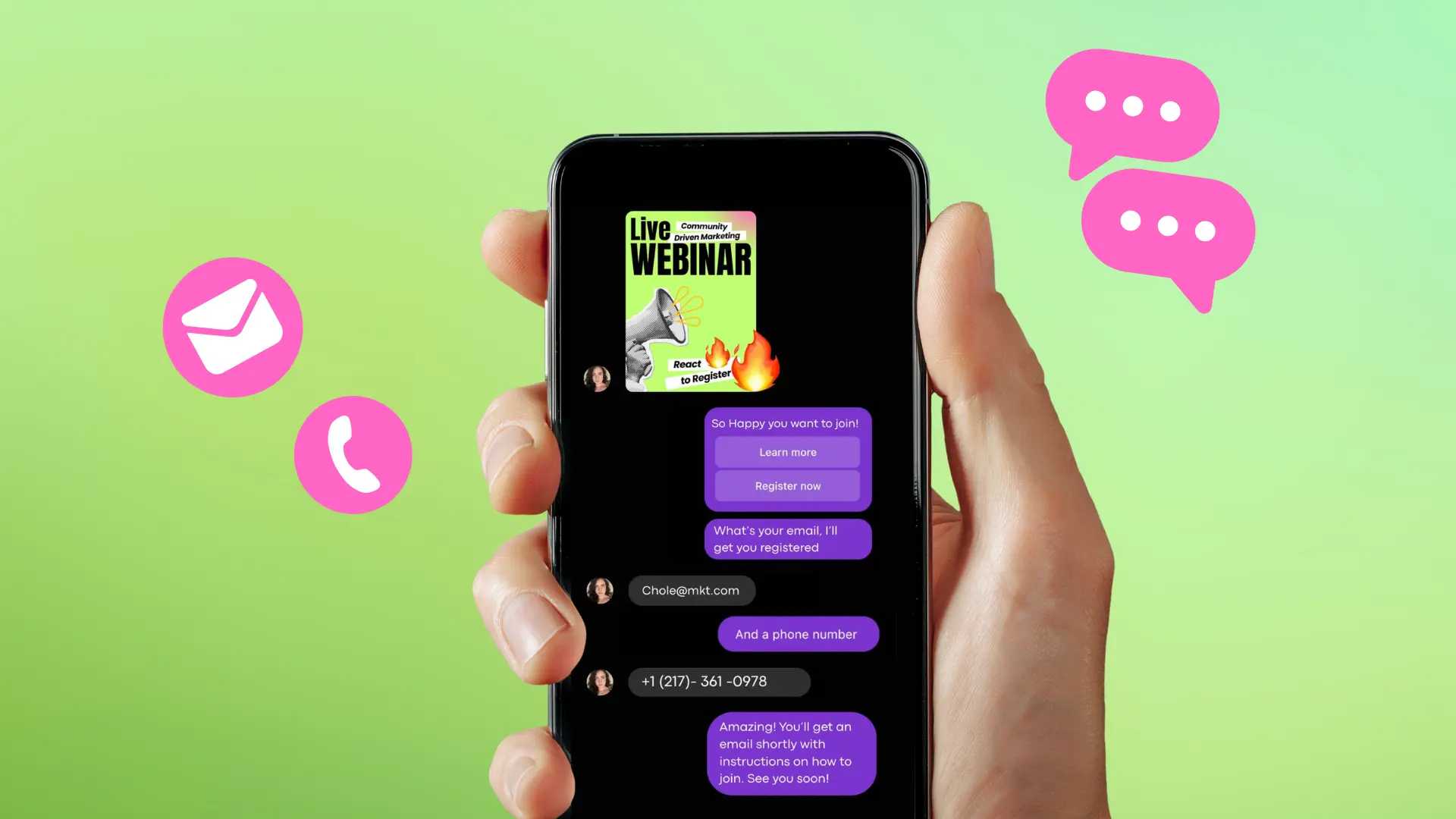
Turn Your DMs Into Lead Gen!
Learn how to collect lead data from your DMs such as email addresses, phone numbers, and more right from your social inbox. If you are not yet automating your DMs your competitors are outpacing you.

How Something Social Saved 75% of Their Time and Increased Revenue by 15%
See how a fast-growing agency improved operations, cut down hours of manual work, and unlocked new revenue opportunities with Vista Social.
New

50 Unique Social Media Ideas for Consistent Content Creation
Discover 50 unique social media post ideas to engage your audience, grow your brand, and maintain a consistent content strategy with ease!
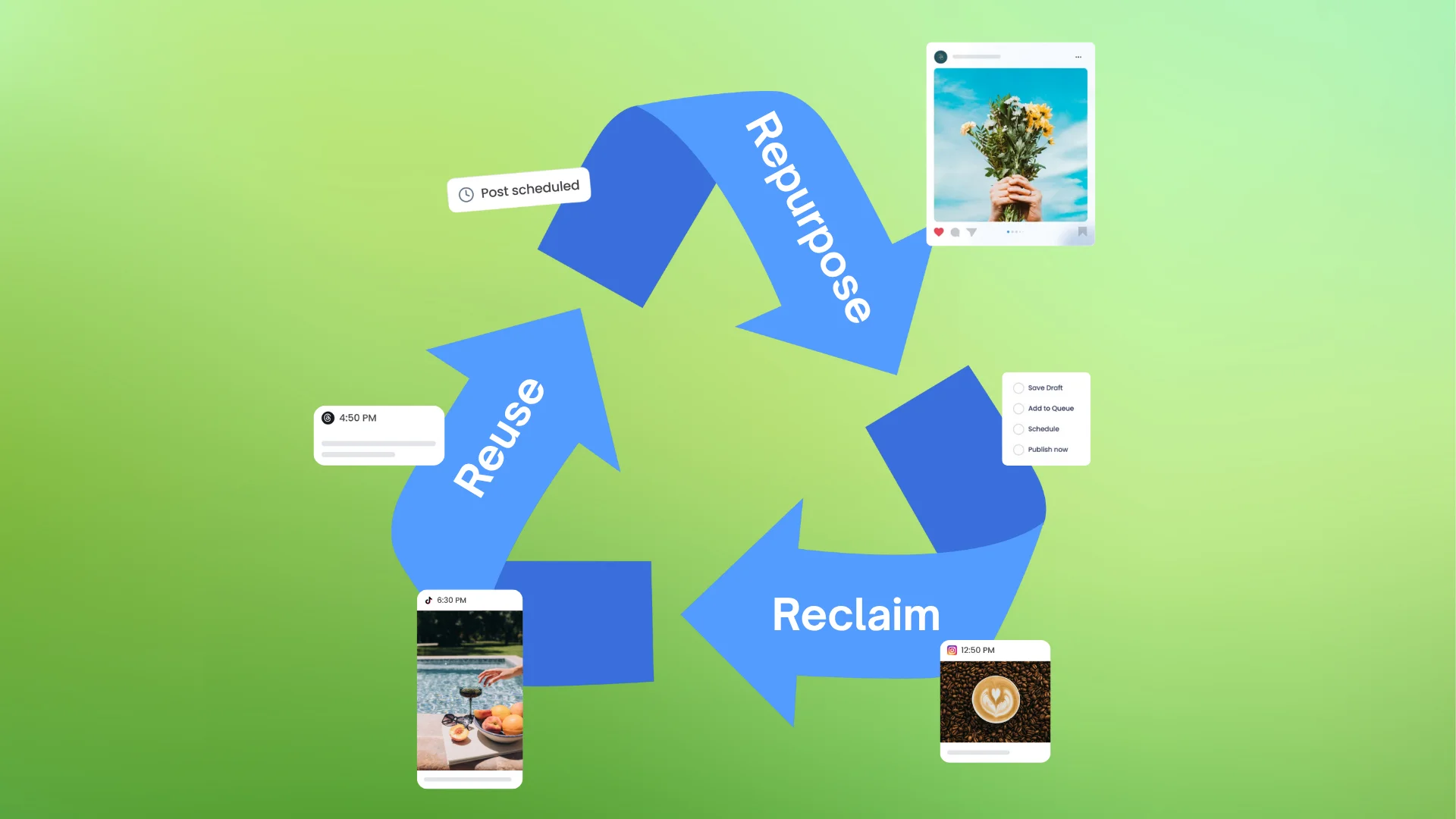
Mastering Content Reuse: The Key to a Consistent and Sustainable Posting Strategy
Published on August 26, 2025
12 min to read
Employee Advocacy for Crisis Communication
Summarize with AI


Table of Content

Employee advocacy for crisis communication can easily make or break your brand the moment a crisis hits.
One wrong tweet, a viral rumor, or an unexpected PR disaster, and suddenly, everyone’s talking.
Yikes!
The good news?
Your employees can be your brand’s strongest defender and loudest supporters when things go south.
When your team rallies behind your brand and shares the right message at the right time, you regain control faster.
With a well-planned employee advocacy strategy, you can turn chaos into clarity and even rebuild trust along the way.
So, how do you empower your employees to become your brand’s most credible crisis communicators?
Let’s break it down below.
Table of contents
What you will learn
- What is employee advocacy for crisis communication?
- Why do you need a solid strategy for employee advocacy for crisis communication?
- How to leverage employee advocacy for crisis communication
- Streamline employee advocacy for crisis communication with Vista Social
- What are the common mistakes to avoid with employee advocacy for crisis communication?
- FAQs on employee advocacy for crisis communication
- Ready to take control with employee advocacy for crisis communication?
What is employee advocacy for crisis communication?
Employee advocacy for crisis communication is about turning your team into your brand’s loudest, most trusted voices when chaos hits.
Instead of relying only on stiff press releases, you let your employees share accurate, timely, and on-brand messages that actually sound human.
Why? Because people will more likely trust people, not polished statements.
When your employees speak authentically, your message lands more softly, feels real, and earns instant credibility among audiences.
Think of it as unlocking a squad of mini brand ambassadors ready to set the record straight, calm the storm, and rebuild trust faster than any corporate statement ever could.
Why do you need a solid strategy for employee advocacy for crisis communication?
Having a strong employee advocacy strategy is crucial for effective crisis communication for the following reasons.
1. Keeps your message consistent
In a crisis, confusion can spread faster than the actual problem.
If your employees don’t know what to say, you’ll end up with mixed messages that can damage your brand’s credibility.
A solid advocacy strategy gives everyone a clear, brand-approved script to follow.
This way, your message stays aligned and consistent everywhere, whether a LinkedIn post or a casual chat with a TikTok follower.
2. Stops misinformation in its tracks
Rumors can easily thrive in silence.
Without a proper plan, false narratives about your brand or an ongoing issue can spiral out of control in minutes.
With employee advocacy, your team acts like an army of frontline fact-checkers.
They’re equipped to quickly share accurate updates, clarify misconceptions, and shut down damaging rumors before they gain traction.
3. Builds trust faster
Let’s face it, people trust people more than polished press releases.
When your employees share updates in their own voices, it feels real, relatable, and human.
That authenticity makes your audiences more likely to believe your message and support your company, even in the middle of a messy PR situation.
4. Amplifies your reach
Your employees’ networks are powerful and often untapped.
When they share timely, on-brand updates, your message reaches far beyond your company’s official channels.
Suddenly, you’re not just relying on a single company statement but hundreds of voices amplifying the same message, making it spread faster than any press release ever could.
5. Empowers your team
Nothing creates panic like being left in the dark.
A strong advocacy strategy gives your employees the guidelines, tools, and confidence they need to represent your brand effectively.
Instead of hesitating or staying silent, they’ll know exactly what to say, when to say it, and how to say it without second-guessing themselves.
That confidence helps reinforce your message and make it more believable, especially since they’re coming from your employees.
6. Rebuilds your reputation
PR crises can shake even the strongest brands, but a united team can help speed up recovery.
When employees rally behind a shared message, they help you control the narrative and rebuild credibility.
It’s not just damage control but reputation restoration powered by authentic human voices.
How to leverage employee advocacy for crisis communication
Learn how to manage and implement employee advocacy for crisis communication by following the steps below.
1. Create a clear crisis communication plan
When a PR crisis hits, chaos can thrive without a plan.
[Must read: How to Build an Employee Advocacy Plan: Step-by-Step Guide]
Before you need it, prepare a step-by-step crisis playbook.
Outline exactly:
- Who approves official statements
- Who manages the employee communication
- What channels should your employees use
- How your employees should respond publicly
For example, if a data breach occurs, your crisis communication plan should include a pre-approved statement that your employees can share.
You can also include clear dos and don’ts about discussing sensitive details online.
The goal?
No mixed signals, no confusion, just one consistent and unified voice.
2. Keep employees informed first
Nothing kills trust faster than employees finding out about a crisis from the media first and from your company second.
Always inform your team internally before going public.
Use quick channels such as Slack, Teams, or internal newsletters to send out timely updates.
If your company faces product recalls, give employees the full context first.
Share what happened, what your company is doing about it, and what your employees can and cannot say about the situation.
When employees feel included and equipped, they can represent your brand more confidently.
3. Provide ready-to-share content
In a crisis, clarity is everything, so don’t expect employees to craft their own posts or figure out what’s safe to say.
Instead, give them pre-approved content to guide them.
For example, during a PR backlash, you can prepare the following:
- Pre-approved social media captions that your employees can copy-paste
- Graphics or infographics explaining the situation
- Frequently Asked Questions (FAQs) for questions they may get online or offline related to the situation
Providing pre-approved content makes it effortless for your employees to advocate for your brand without worrying about missteps.
4. Train employees to communicate effectively
Not every employee is comfortable navigating sensitive conversations online.
That is why it’s important to offer quick training sessions or cheat sheets to help your employees communicate with empathy and professionalism.
For example, you can run a 30-minute crisis-response workshop that covers the following:
- How to handle negative and even rude comments
- When to respond vs. when to escalate
- The right tone to use in emotionally charged situations and interactions
When trained, your employees become confident, credible messengers instead of silent bystanders.
5. Use trusted internal champions
Every company has socially active, influential, or deeply trusted employees.
These are your advocacy champions.
Equip them first, and they can inspire other employees to follow.
For instance, during an unavoidable company-wide layoff, don’t rely solely on an official statement.
Instead, have your internal champions share transparent updates about how the company is supporting your affected employees.
Your advocates’ voices add authenticity and relatability that your corporate messaging may not achieve alone.
6. Monitor and adjust in real time
PR and brand-related crises change quickly, and so should your messaging.
Use social listening tools to track online conversations, spot misinformation, and measure sentiment around your brand.
For example, if you notice a false narrative gaining traction on X (Twitter), immediately alert employees and provide an updated talking point to address it.
Real-time monitoring helps ensure that your advocacy strategy, communication efforts, and even marketing campaign stay relevant and effective throughout the crisis.
[Must read: Employee Advocacy Marketing: Tips And Tricks this 2024]
7. Recognize and support your employees
Employee advocacy thrives on trust and motivation.
So, don’t just expect your employees to jump in, but acknowledge their efforts and support them.
For instance, you can send out a thank-you message after the crisis that highlights the employees who helped share accurate information.
You can also organize a post-crisis debrief to discuss lessons learned and give your employees a voice in improving your future advocacy and even marketing strategies.
[Must read: What is the Future of Employee Advocacy?]
When employees feel appreciated, they’re more likely to step up the next time your brand needs them.
8. Encourage authentic storytelling
People often connect with people, not brands, especially when faced with a crisis.
A polished corporate statement may sound safe, but it can feel distant and detached.
Your employees, on the other hand, have the power to make your response more human and relatable.
Encourage your employees to share personal stories, behind-the-scenes updates, or even their experiences during the crisis.
These narratives can help your audience see the real faces behind the brand, which are hardworking people who care and are doing their best.
Let’s say your company faces major shipping delays. Instead of relying solely on an official statement, employees could post something like:
“Our team has been working around the clock to make sure every affected customer gets quick support. I’m proud to be part of a company that owns up to mistakes and puts customers first.”
The approach builds empathy and trust because audiences relate more to an employee sharing their perspective than to a faceless corporate message.
9. Centralize communication channels
In the middle of a crisis, scattered information is dangerous.
If your employees get updates from multiple places, such as emails, Slack, random chats, or social media posts, you risk mixed messages and confusion.
To avoid this, set up a single source of truth for all your company’s crisis-related communication.
Try Vista Social for Free
A social media management platform that actually helps you grow with easy-to-use content planning, scheduling, engagement and analytics tools.
Get Started NowIt could be a dedicated Slack channel, a document management platform, or even a crisis dashboard that allows your employees to:
- Access pre-approved statements and updates
- Download ready-to-share content
- Get FAQs and response guidelines
- Stay informed in real-time
[Must read: Top Employee Advocacy Guide: w/ Tips, Tools, & Programs]
Suppose there’s a viral rumor affecting your brand.
If your employees are unsure what’s true, they may accidentally share outdated or incorrect information.
By keeping everything centralized in one easily accessible place, your employees always know where to go for the latest, brand-approved updates.
It prevents miscommunication, keeps your messaging consistent, and empowers your team to respond confidently.
10. Measure advocacy impact
Once the dust settles, don’t just move on.
Measure the effectiveness of your employee advocacy campaigns and communication efforts during the crisis.
[Must read: How to Simplify Implementing Employee Advocacy Campaigns]
Understanding what worked and what didn’t help make your future strategies stronger.
You can track and analyze key metrics such as:
- Reach. How many people saw your employee-shared updates?
- Engagement. Were your audiences liking, sharing, or commenting positively?
- Sentiment. Did conversations around your brand improve or worsen?
- Consistency. Did your employees stick to your approved messaging, or were there gaps?
Use reliable employee advocacy tools to track employee engagement, how many shared the content, how far your message spread, and how your audiences reacted.
[Must read: Top Employee Advocacy Tools to Improve Brand Reach this 2025]
The data gives you valuable insights to refine your advocacy strategy.
This way, when the next crisis hits, you can respond more quickly, strategically, and effectively.
Streamline employee advocacy for crisis communication with Vista Social
Managing a crisis is stressful enough, and juggling employee communication on top of it can feel overwhelming.
That’s where Vista Social steps in to make your life easier.
It provides the tools to align your team, amplify the right message, and protect your brand’s reputation all in one platform.
Vista Social’s employee advocacy feature helps you turn your employees into confident, well-informed brand advocates without the chaos of scattered emails, missed updates, and inconsistent messaging.
After logging into your Vista Social account, create your Advocacy program by selecting Advocacy on the main left-hand side menu.
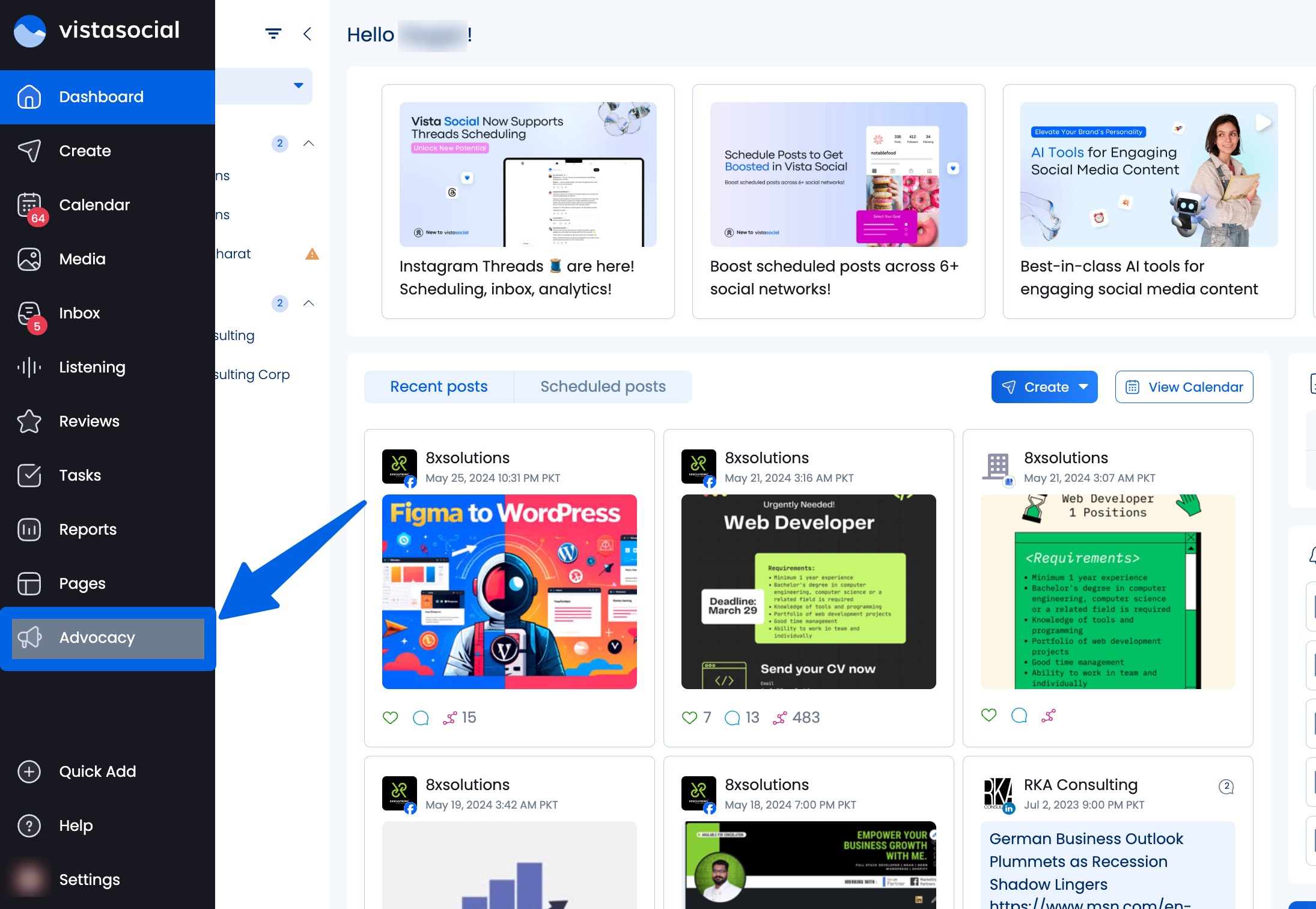
Select the + Create advocacy option.
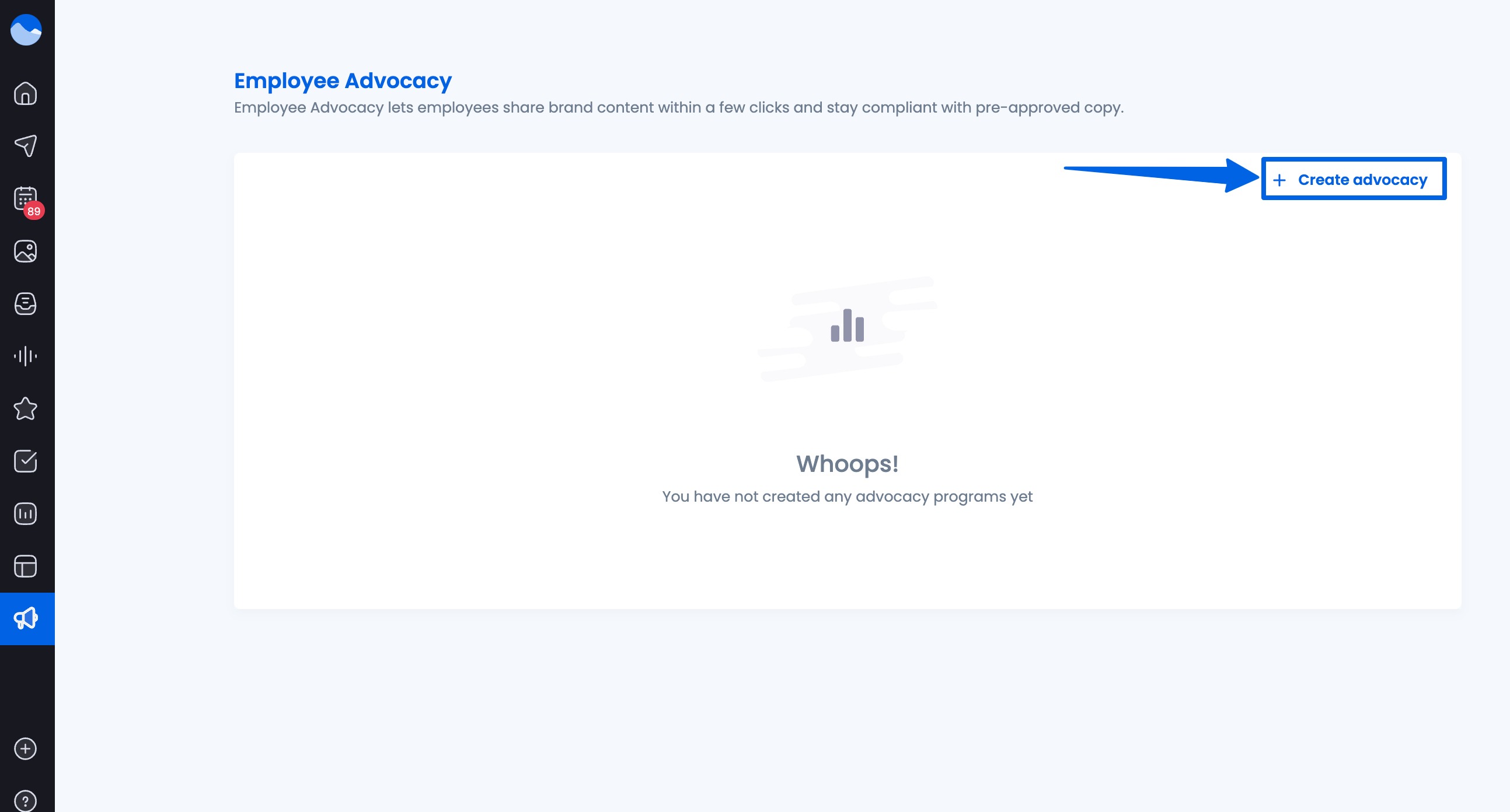
Next, select your profile group (you can only create one advocacy for each profile group), set up Slack or email notifications, and configure the rest of the details.
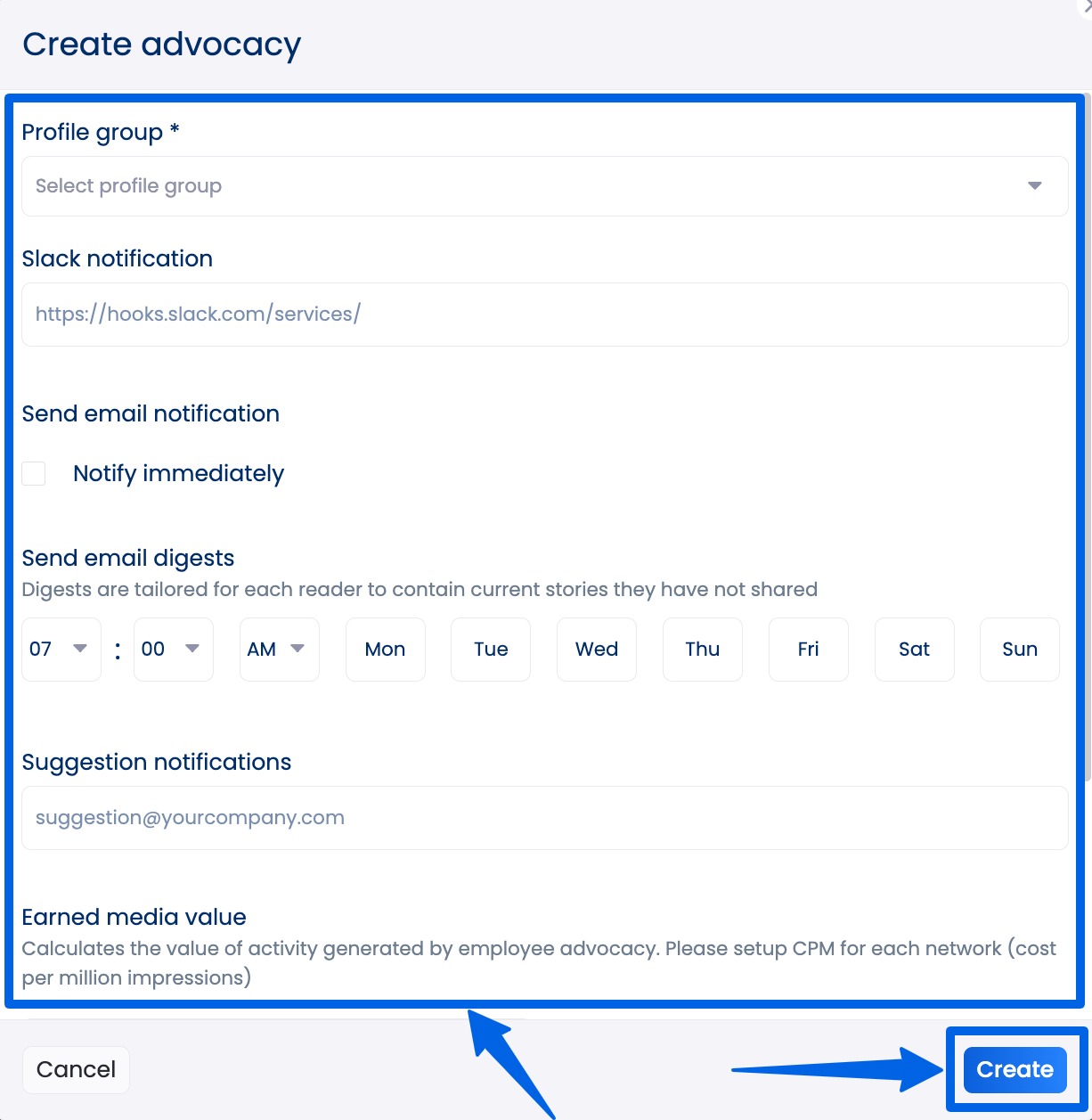
After clicking Create, you can start inviting your employees/advocates.

You can invite advocates by:
- Importing a spreadsheet containing a column for your employees’ first name, last name, and email address into a CSV file
- Inviting advocates individually by manually entering their name and email address
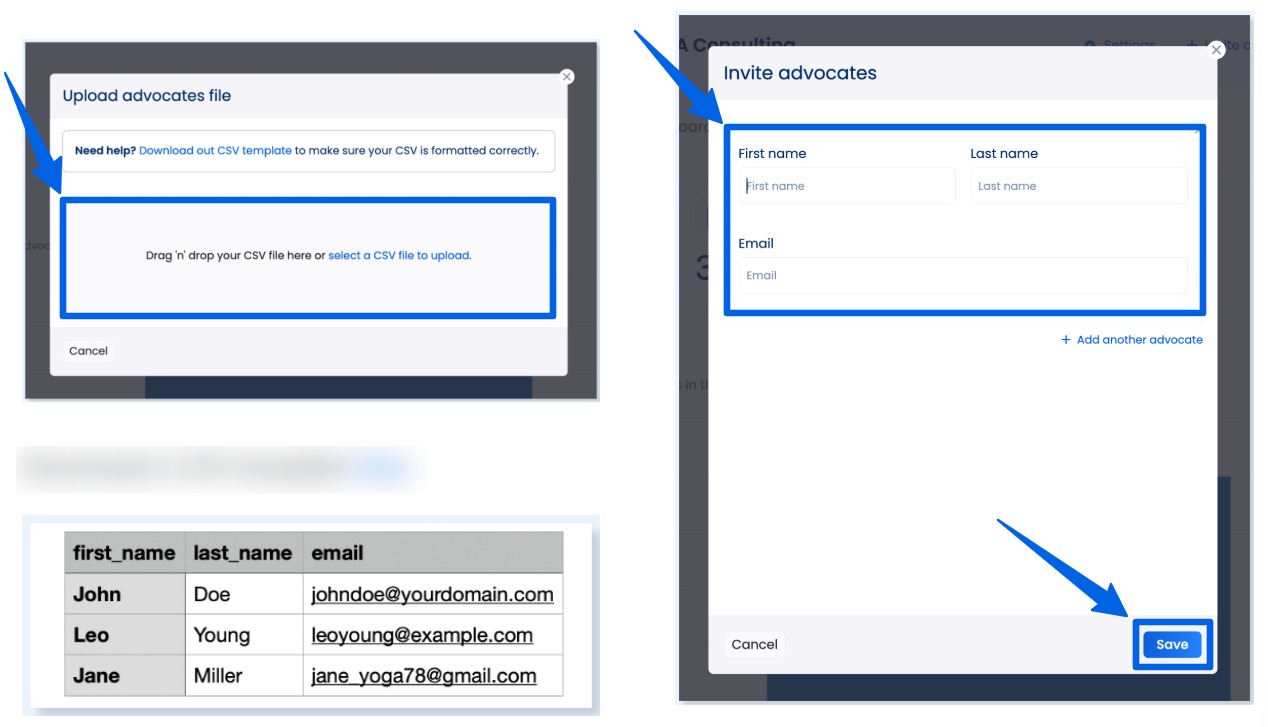
Click Save and you’re set. Your advocates will receive an email invitation to join your advocacy program.
[Must read: 3 Employee Advocacy Program Examples worth Following]
Now that you’ve set up your Advocacy Program, it’s time to create and distribute pre-approved content.
With Vista Social, you can draft posts, captions, and visuals that are pre-approved by your communications or advocacy management team.
You can create two types of content that your advocates can see in the Content section:
- Advocacy-only content that was created by admins and made available for sharing to your employees’ personal social media accounts as a new organic post
- Published content, which is a post that was already published to your social media accounts and is available for your employees to comment on, like, share, and repost
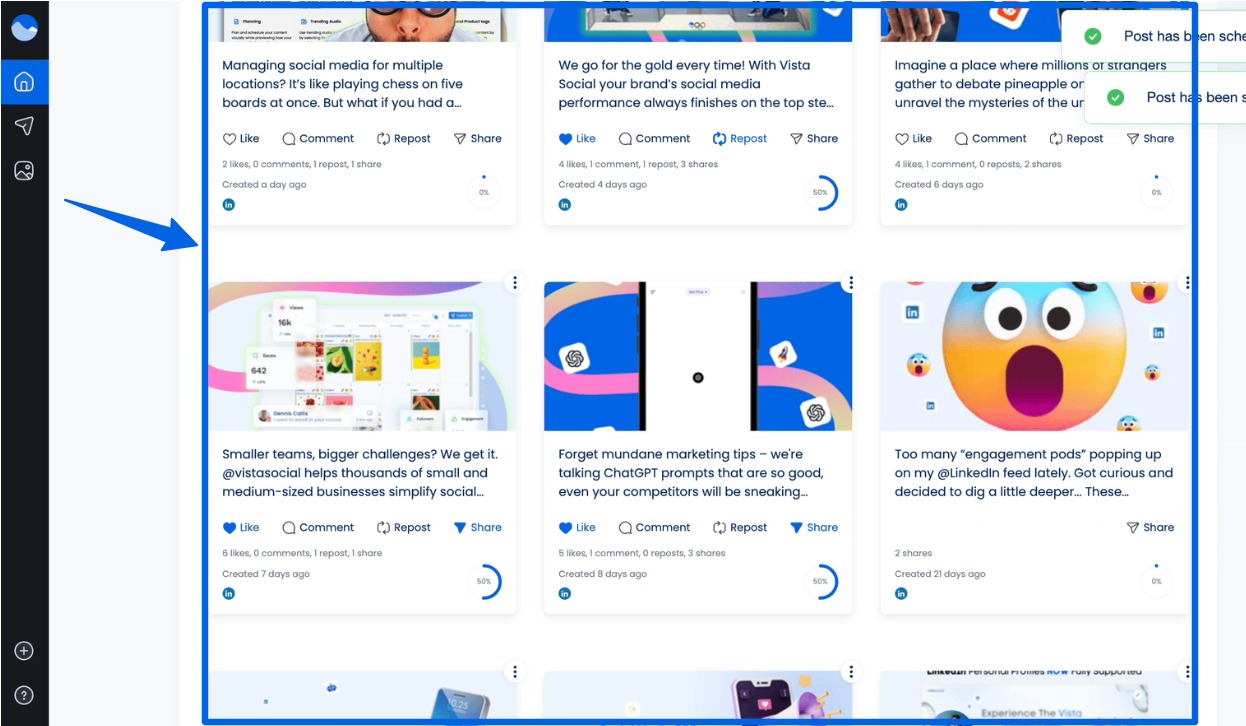
Go back to the Advocacy page, click Schedule advocacy post, and choose from the Advocacy post options.
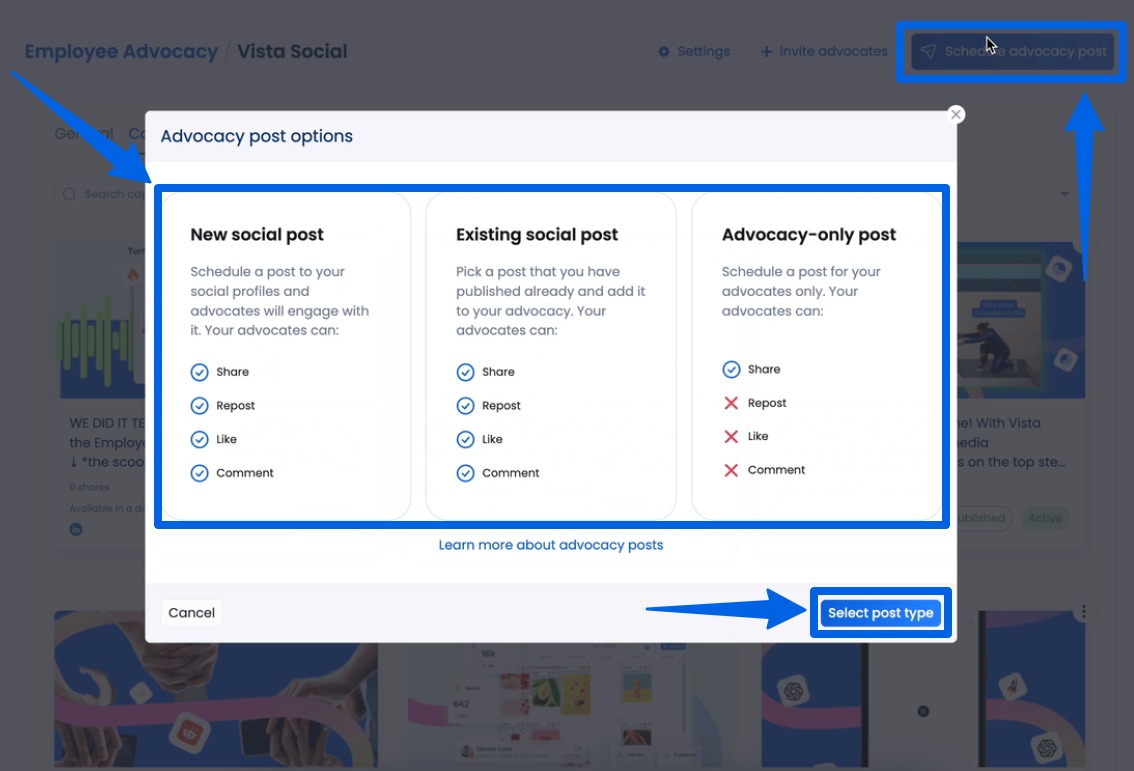
Create your post by uploading the image or video, adding captions, emojis, and hashtags, setting the post to auto-publish, selecting the specific social media channels you want to publish the post to, etc.
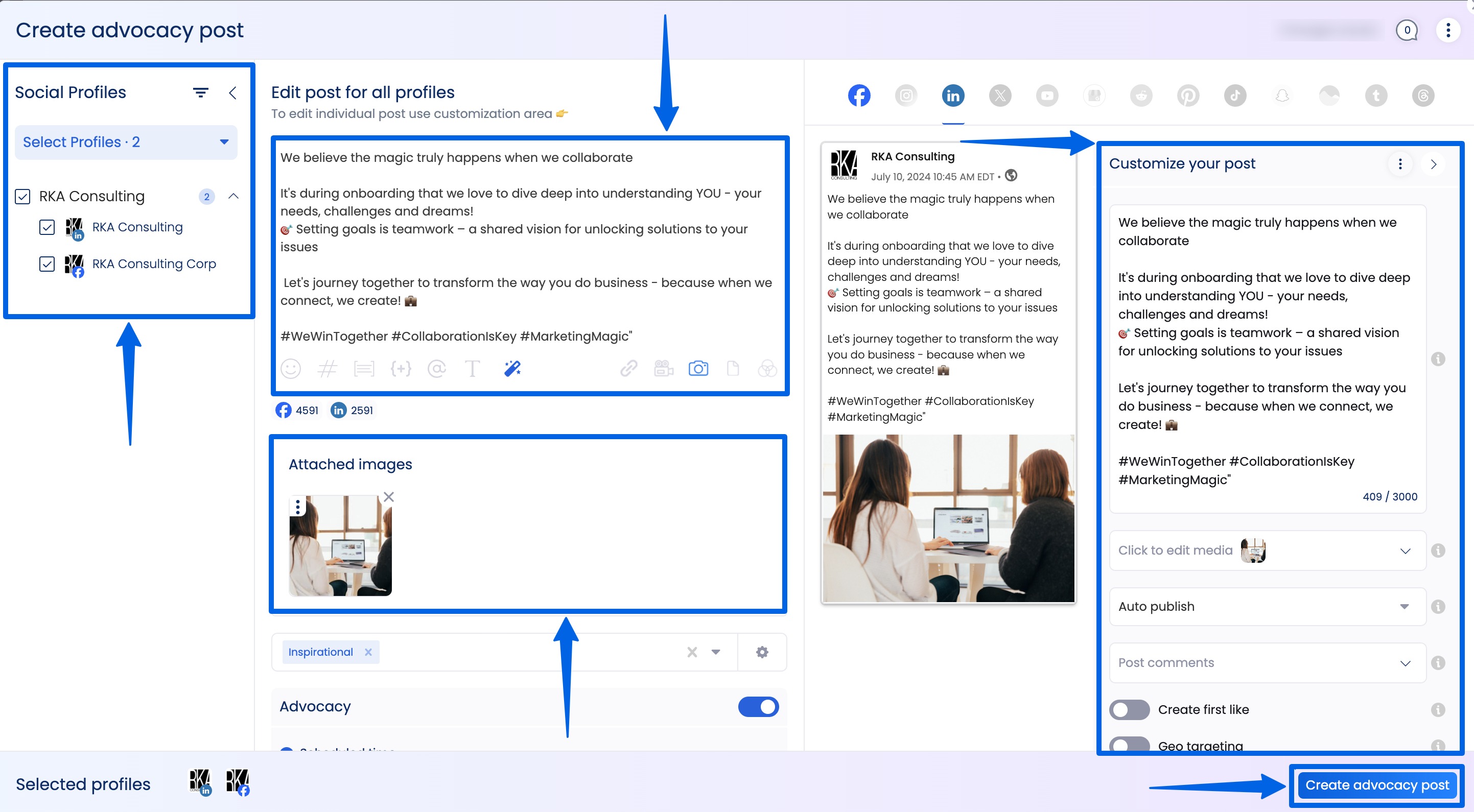
Generate engaging captions and taglines instantly using the AI Assistant. You can also use it to refine your written captions.
The Advocacy toggle button at the lower part of the screen is switched on by default.
You can set a schedule to make the post available for your advocates, or you can save it as a draft.
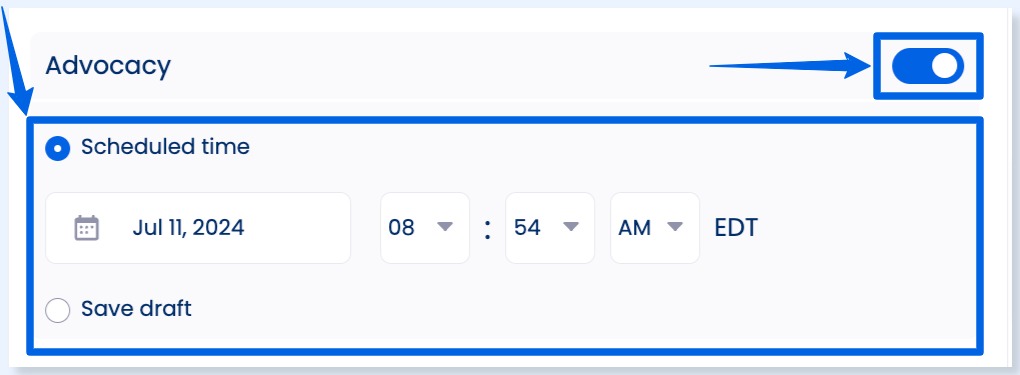
The feature helps you ensure that there are no risky improvisations, no inconsistent messaging, especially for crisis communication.
For example, if your B2B company is facing a data breach, you can create a post with a short, empathetic statement and a simple infographic that employees can repost and share.
[Must read: B2B Employee Advocacy Step-by-Step Guide in 2025]
Vista Social’s employee advocacy feature includes a centralized dashboard to help you manage and run your advocacy program and crisis communication strategies with ease.
On the main Employee Advocacy page, select the specific advocacy program to access its specific dashboard.

The specific dashboard includes the following tabs:
- General. Shows the top metrics to track and analyze the performance of your employee advocacy program
- Content. Contains all your drafted, scheduled, and published advocacy posts
- Activity. Shows all your advocates’ activities (likes, comments, shares of your advocacy posts)
- Leaderboard. Displays a ranking of top-performing advocates based on certain metrics such as shares, reposts, engagement, or earned media value.
- Advocates. Shows a complete list of all your advocates (for the specific advocacy program)

With Vista Social, you’re not just managing a crisis but equipping your team to amplify the right message, keep communications consistent, and protect your brand’s reputation.
What are the common mistakes to avoid with employee advocacy for crisis communication?
Steer clear of the pitfalls below to ensure you leverage employee advocacy effectively and efficiently and make the most of its benefits for crisis communication.
[Must read: Top Benefits of Employee Advocacy: w/ Tips]
Overloading employees with too much information
During a crisis, employees need clarity, not walls of text.
Bombarding them with lengthy emails or documents only leads to confusion.
Instead, give them short and actionable updates with everything they need to know, such as pre-written captions, clear dos and don’ts, and links to longer resources if necessary.
Keeping things concise helps your employees respond quickly without second-guessing what they should say or share.
You can also ask for employee feedback on the key information they need so you can stick to sharing only relevant details.
Being too slow to respond
Delaying your responses to PR and other similar issues with your brand can leave A LOT of room for rumors and misinformation to spread.
To stay ahead, prepare pre-approved messaging templates for potential crisis scenarios and assign clear decision-makers who can sign off on updates fast.
Using employee advocacy tools with real-time notifications also helps you mobilize your workforce instantly.
This way, your brand and advocates can respond before the wrong narrative spirals out of control.
Letting employees freestyle their messaging
There’s a time and place for your employees to add their personalities and voices to advocacy posts—but it shouldn’t be in the midst of a PR crisis.
When employees use their own tone, words, or personal opinions during a crisis, even small deviations can lead to big misunderstandings.
To avoid this, provide approved, brand-aligned messaging and explain why consistency is critical for protecting everyone involved.
You can also supply pre-written social posts, FAQs, and talking points so your employees can focus on amplifying your message rather than creating their own.
Ignoring employee concerns
Your employees are not just messengers but also stakeholders who may be personally affected by the crisis.
Overlooking their concerns creates distrust, a lack of employee participation, and hesitation in sharing your updates.
Keep employees informed with internal-only updates before going public, address their questions openly, and provide access to support resources if necessary.
When employees feel seen and supported, they’re far more likely to advocate for your brand confidently.
It also makes the content they share more believable and authentic to audiences.
Failing to monitor advocacy efforts in real time
Simply pushing employees to share updates isn’t enough.
You also need to monitor how those messages land.
Use social media listening tools to track engagement, audience sentiment, and feedback loops to gain valuable insights into what resonates and what doesn’t.
If misinformation spreads or your messaging misses the mark, you can pivot quickly.
Real-time monitoring ensures your advocacy efforts are both effective and aligned with audience perception.
FAQs on employee advocacy for crisis communication
What makes employee voices more effective than corporate messaging during a crisis?
Real stories from employees feel more credible and empathetic, especially during a PR crisis.
They’re not filtered through corporate PR, making them more human, relatable, and persuasive.
How do you preserve employee morale during a crisis?
Show empathy and support, and encourage employee opinions when developing your message.
You can also share resources, offer emotional and practical assistance, and make room for listening.
Valuing your employees builds loyalty, even under pressure.
What role does training play in crisis communication via employee advocacy?
Training builds confidence and clarity.
By providing your employees with workshops or materials on messaging, tone, and protocol, you can reduce hesitancy and missteps.
It’s an effective way to turn your guidelines into second nature for your employee advocates.
[Must read: Employee Advocacy Guidelines Worth Following This 2024]
Ready to take control with employee advocacy for crisis communication?
Employee advocacy is a powerful approach for crisis communication—and isn’t just about damage control.
It’s about turning your employees into credible storytellers who help your brand regain trust and stay human when it matters most.
The stronger and more aligned your advocacy strategy, the faster you can turn confusion into clarity and rebuild your brand’s reputation.
Ready to take the guesswork out of empowering your team?
With Vista Social, you can streamline employee advocacy, manage messaging in real time, and keep everyone on the same page.
About the Author
Content Writer
Jimmy Rodela is a social media and content marketing consultant with over 9 years of experience, with work appearing on sites such as Business.com, Yahoo, SEMRush, and SearchEnginePeople. He specializes in social media, content marketing, SaaS, small business strategy, marketing automation, and content development.
Read with AI
Save time reading this article using your favorite AI tool
Summarize with AI
Never Miss a Trend
Our newsletter is packed with the hottest posts and latest news in social media.
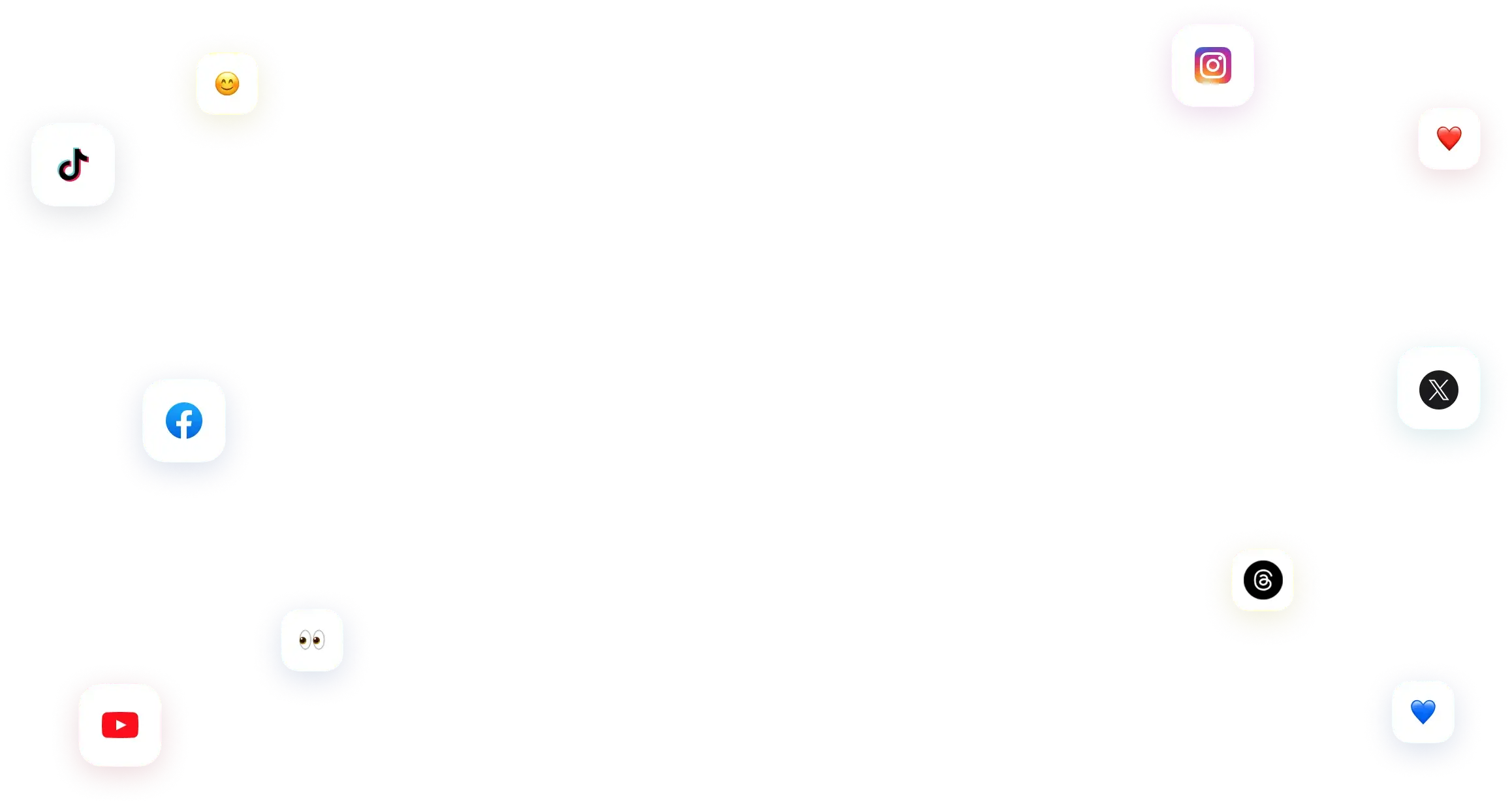
You have many things to do.
Let us help you with social media.
Use our free plan to build momentum for your social media presence.
Or skip ahead and try our paid plan to scale your social media efforts.
P.S. It will be a piece of cake 🍰 with Vista Social
Subscribe to our Newsletter!
To stay updated on the latest and greatest Social Media news. We promise not to spam you!


